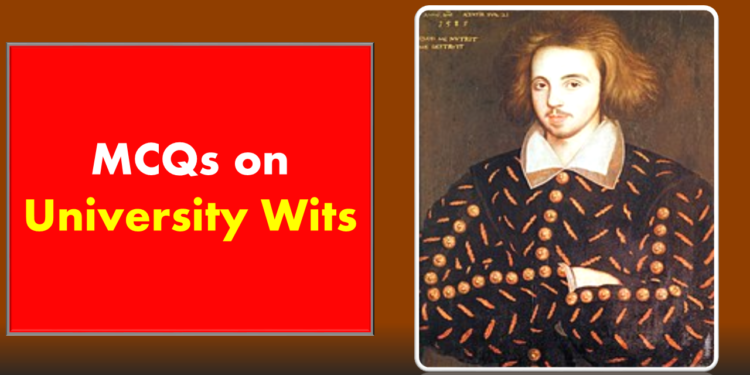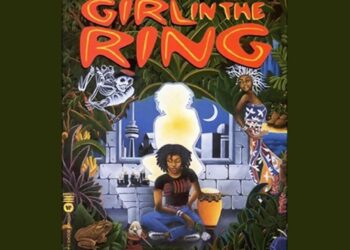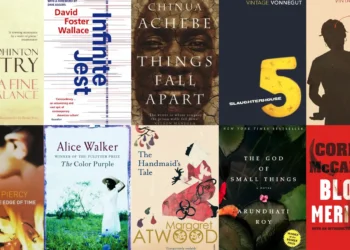50 MCQs on University Wits
1. Who coined the term “University Wits”?
a. Ben Jonson
b. Christopher Marlowe
c. Thomas Nashe
d. Robert Greene
2. Which University Wits were contemporaries of William Shakespeare?
a. Thomas Kyd and John Lyly
b. Thomas Nashe and Robert Greene
c. George Peele and Christopher Marlowe
d. All of the above
3. Which University Wit was known for his pastoral prose romance “Euphues”?
a. Thomas Kyd
b. Christopher Marlowe
c. John Lyly
d. Thomas Nashe
4. Who is considered the first professional playwright among the University Wits?
a. Christopher Marlowe
b. John Lyly c. Thomas Nashe
d. Robert Greene
5. Which University Wit wrote “The Spanish Tragedy,” a popular revenge tragedy?
a. Christopher Marlowe
b. Thomas Kyd
c. John Lyly
d. George Peele
6. What was the primary source of inspiration for Christopher Marlowe’s play “Doctor Faustus”?
a. Greek mythology
b. Medieval morality plays
c. German legend of Faust
d. Roman history
7. Which University Wit was known for his satirical works, including “The Unfortunate Traveller”?
a. Thomas Kyd
b. John Lyly
c. Thomas Nashe
d. Robert Greene
8. In which play did Christopher Marlowe use the famous line “Was this the face that launched a thousand ships”?
a. “Tamburlaine”
b. “Doctor Faustus”
c. “Dido, Queen of Carthage”
d. “Edward II”
9. What was the nickname given to the group of University Wits by Ben Jonson?
a. The Learned Crew
b. The Literary Lions
c. The Wise Scholars
d. The Poetic Masters
10. Who among the University Wits was known for his contributions to the development of blank verse in English drama?
a. Christopher Marlowe
b. John Lyly
c. Thomas Kyd
d. George Peele
11. Which University Wit was a Cambridge graduate and wrote plays such as “Endymion, the Man in the Moon”?
a. Christopher Marlowe
b. John Lyly
c. Thomas Nashe
d. Thomas Kyd
12. Who was the University Wit known for his controversial pamphlets and plays like “The Roaring Girl”?
a. Christopher Marlowe
b. Thomas Kyd
c. Thomas Nashe
d. Thomas Dekker
13. Which University Wit had a rivalry with Ben Jonson and was involved in the “War of the Theatres”?
a. Christopher Marlowe
b. Thomas Kyd
c. John Lyly
d. Thomas Dekker
14. Who wrote the play “Friar Bacon and Friar Bungay” among the University Wits?
a. George Peele
b. Christopher Marlowe
c. John Lyly
d. Thomas Nashe
15. What was the primary theme of Robert Greene’s play “Friar Bacon and Friar Bungay”?
a. Love and romance
b. Supernatural elements and magic
c. Political intrigue
d. Historical events
16. Which University Wit is credited with introducing the use of blank verse in English drama?
a. Christopher Marlowe
b. John Lyly
c. George Peele
d. Thomas Kyd
17. Who among the University Wits was a notable poet, translator, and playwright known for his contributions to English drama?
a. Thomas Kyd
b. Christopher Marlowe
c. George Peele
d. John Lyly
18. Which University Wit wrote the play “Edward II,” a historical drama about the reign of King Edward II?
a. Thomas Kyd
b. Christopher Marlowe
c. George Peele
d. Robert Greene
19. What genre is John Lyly often associated with in his plays?
a. Tragedy
b. Comedy
c. History
d. Romance
20. Who was the University Wit known for his work as a prose writer, pamphleteer, and playwright, and wrote works like “Pierce Penniless”?
a. Christopher Marlowe
b. Thomas Nashe
c. John Lyly
d. Thomas Kyd
Also Read-
MCQs on Scottish Chaucerians
21. In which play does Christopher Marlowe explore the theme of overreaching ambition through the character of Dr. Faustus?
a. “Tamburlaine”
b. “Dido, Queen of Carthage”
c. “Edward II”
d. “Doctor Faustus”
22. Which University Wit was associated with the “university men” who were scholars and writers involved in London’s literary and theatrical circles?
a. Christopher Marlowe
b. Thomas Kyd
c. John Lyly
d. Thomas Nashe
23. hat was the cause of Christopher Marlowe’s death?
a. Duel
b. Illness
c. Assassination
d. Natural causes
24. Who is credited with writing the first English blank verse tragedy, “Gorboduc,” which predates the University Wits?
a. Thomas Kyd
b. John Lyly
c. George Peele
d. Thomas Norton and Thomas Sackville
25. Which University Wit was known for his collaboration with Thomas Nashe on works like “Dido, Queen of Carthage”?
a. Christopher Marlowe
b. George Peele
c. Thomas Kyd
d. John Lyly
26. What was the genre of Christopher Marlowe’s play “Tamburlaine”?
a. Tragedy
b. Comedy
c. History
d. Romance
27. Who among the University Wits was known for his plays containing allegorical elements and courtly masques?
a. Thomas Kyd
b. John Lyly
c. George Peele
d. Thomas Nashe
28. What was the primary occupation of Robert Greene before becoming a playwright?
a. Lawyer
b. Teacher
c. Clergyman
d. Actor
29. Which University Wit wrote the play “The Old Wives’ Tale,” a comedy with elements of fantasy and magic?
a. Thomas Kyd
b. George Peele
c. John Lyly
d. Robert Greene
30. In which play did Christopher Marlowe depict the rise and fall of a Scythian shepherd who becomes a conquering emperor?
a. “Doctor Faustus”
b. “Tamburlaine”
c. “Dido, Queen of Carthage”
d. “Edward II”
31. Which University Wit was associated with the literary circle known as the “School of Night” and had a reputation for being an atheist?
a. Christopher Marlowe
b. Thomas Kyd
c. John Lyly
d. George Peele
32. Who was the University Wit known for his collaboration with Thomas Nashe on “Summer’s Last Will and Testament”?
a. Christopher Marlowe
b. George Peele
c. John Lyly
d. Thomas Kyd
33. Which University Wit was known for his involvement in the production of popular pamphlets and moralistic works such as “Greenes, Groatsworth of Witte”?
a. Christopher Marlowe
b. Thomas Kyd
c. John Lyly
d. Robert Greene
34. What is the central theme of Christopher Marlowe’s play “The Jew of Malta”?
a. Love and revenge
b. Religious conflict
c. Political intrigue
d. The pursuit of wealth
35. Who wrote the play “The Battle of Alcazar,” a historical tragedy set during the conflict between Don Sebastian of Portugal and the Moors?
a. Christopher Marlowe
b. George Peele
c. John Lyly
d. Robert Greene
36. In which play did Christopher Marlowe depict the tragic story of the queen of Carthage and her love affair with the Trojan hero Aeneas?
a. “Doctor Faustus”
b. “Tamburlaine”
c. “Dido, Queen of Carthage”
d. “Edward II”
37. Which University Wit was known for his play “The Arraignment of Paris,” a masque-like entertainment with elements of pastoral romance?
a. John Lyly
b. Christopher Marlowe
c. Thomas Kyd d. George Peele
d. Thomas Kyd
38. Who among the University Wits was a contemporary and friend of William Shakespeare, and was praised for his wit and humor?
a. Christopher Marlowe
b. John Lyly
c. Thomas Nashe
d. Thomas Kyd
39. Which University Wit was known for his play “The Battle of Agincourt,” a historical drama set during the Hundred Years’ War?
a. Christopher Marlowe
b. George Peele
c. John Lyly
d. Thomas Kyd
40. What was the major literary form that John Lyly popularized through his works like “Euphues”?
a. Blank verse
b. Prose romance
c. Sonnet sequence
d. Morality play
41. Who was the University Wit associated with the phrase “upstart crow” in reference to William Shakespeare?
a. Thomas Kyd
b. Christopher Marlowe
c. Robert Greene
d. John Lyly
42. Which University Wit was known for his collaboration with Thomas Nashe on the satirical play “Summer’s Last Will and Testament”?
a. Christopher Marlowe
b. George Peele
c. John Lyly
d. Thomas Kyd
43. What was the genre of Robert Greene’s play “Friar Bacon and Friar Bungay”?
a. Tragedy
b. Comedy
c. History
d. Romance
44. Who was the University Wit known for his pamphlets attacking fellow writers, including the famous “Farewell to Folly”?
a. Christopher Marlowe
b. Thomas Kyd
c. John Lyly
d. Robert Greene
45. Which University Wit was known for his play “Friar Bacon and Friar Bungay,” featuring magical elements and a talking brass head?
a. Christopher Marlowe
b. Thomas Nashe
c. John Lyly
d. Robert Greene
46. What is the central theme of John Lyly’s play “Endymion, the Man in the Moon”?
a. Love and revenge
b. Supernatural elements and magic
c. Political intrigue
d. The pursuit of wealth
47. Who was the University Wit known for his works that explored the seamy side of London life, such as “The Roaring Girl”?
a. Christopher Marlowe
b. Thomas Kyd
c. Thomas Nashe
d. Thomas Dekker
48. Which University Wit was known for his collaboration with Thomas Nashe on the play “Dido, Queen of Carthage”?
a. Christopher Marlowe
b. George Peele
c. John Lyly
d. Thomas Kyd
49. In which play did Christopher Marlowe depict the tragic story of Edward II’s reign and his relationship with Piers Gaveston?
a. “Doctor Faustus”
b. “Tamburlaine”
c. “Dido, Queen of Carthage”
d. “Edward II”
50. Which University Wit was known for his plays like “The Famous Victories of Henry V,” a precursor to Shakespeare’s “Henry IV” plays?
a. Christopher Marlowe
b. John Lyly
c. Thomas Kyd
d. George Peele
Answer
- b. Christopher Marlowe
- d. All of the above
- c. John Lyly
- a. Christopher Marlowe
- b. Thomas Kyd
- c. German legend of Faust
- d. Robert Greene
- c. “Dido, Queen of Carthage”
- a. The Learned Crew
- a. Christopher Marlowe
- b. John Lyly
- d. Thomas Dekker
- d. Thomas Dekker
- a. George Peele
- b. Supernatural elements and magic
- a. Christopher Marlowe
- c. George Peele
- b. Christopher Marlowe
- b. Comedy
- b. Thomas Nashe
- d. “Doctor Faustus”
- a. Christopher Marlowe
- a. Duel
- d. Thomas Norton and Thomas Sackville
- b. George Peele
- a. Tragedy
- b. John Lyly
- b. Teacher
- d. Robert Greene
- b. “Tamburlaine”
- a. Christopher Marlowe
- b. George Peele
- d. Robert Greene
- d. The pursuit of wealth
- b. George Peele
- c. “Dido, Queen of Carthage”
- a. John Lyly
- c. Thomas Nashe
- b. George Peele
- b. Prose romance
- c. Robert Greene
- b. George Peele
- b. Comedy
- d. Robert Greene
- a. Christopher Marlowe
- b. Supernatural elements and magic
- d. Thomas Dekker
- b. George Peele
- d. “Edward II”
- d. George Peele
















